Windows 7 Tested on Retina Display MacBook Pro: How Good Is It?
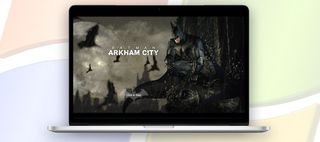
Everyone who's gotten their hands on the new MacBook Pro has raved about the Retina Display and its astounding 2880 x 1800 resolution -- and with good reason. Text, photos, video and games have never looked as sharp on a laptop display as they do on the new MacBook Pro. Apple has optimized its own applications, including Safari, Mail, iPhoto and iMovie, to take full advantage of the increased resolution. Blizzard Entertainment has even announced that its ultra-popular roleplaying game, "Diablo III", will support a resolution of 2880 x 1880. (We averaged 41 frames per second in our review of the system.)
But how good does Windows 7 look on the MacBook Pro's Retina Display? In a word: Fantastic.
As long as you boost increase the size of text and icons to the "Larger" size (150%), the MacBook Pro's 15-inch display feels as large as a 24-inch monitor. Make the text any smaller, however, and reading becomes an experience painful to anyone without hawk eyes. What's more, the MacBook Pro's powerful hardware ensured that our benchmarks clocked in with stellar scores -- although not every Windows feature proved compatible with Boot Camp. Get the full story below.
Retina Display
Windows 7 has never looked better. But don't take our word for it -- see for yourself below. Just a brief caveat: Although the display is easier to read with text and icons set to 150 percent size, for these screen shots we set the display size to 100 percent to more effectively demonstrate the difference in quality between 1800p, 1080p, 900p and 768p resolutions.
1366 x 768
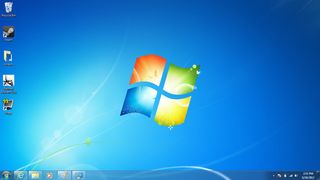
1600 x 900
Stay in the know with Laptop Mag
Get our in-depth reviews, helpful tips, great deals, and the biggest news stories delivered to your inbox.
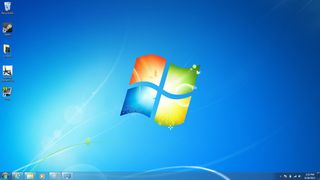
1920 x 1080
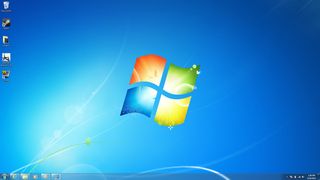
2880 x 1080
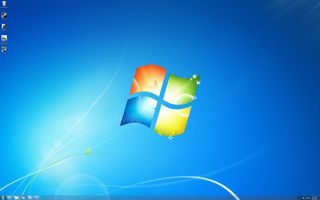
As you can see, the Retina Display effectively quadruples the screen real estate compared to a 1366 x 768 screen. Text looks much crisper, as well. Compare these images of the Laptopmag.com home page:
1366 x 768
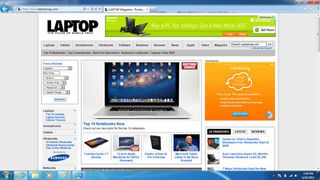
1600 x 900
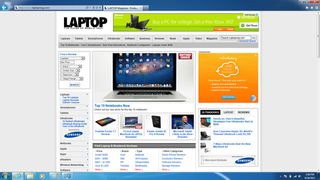
1920 x 1080
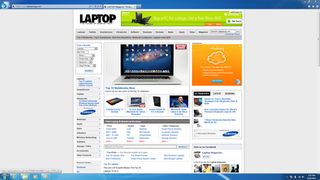
2880 x 1800
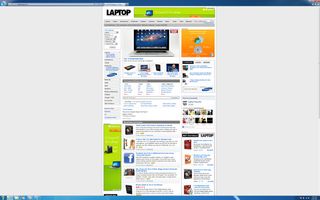
Interestingly, it appears that some Windows applications, such as the Windows version of the Google Chrome browser, haven't been optimized for the Retina Display. Comparing Internet Explorer and Chrome side-by-side, text and images on IE appear much crisper than on Chrome, which suffers from very noticeable fuzziness when viewed at 2880 x 1800. See for yourself below -- Internet Explorer is on the left, while Chrome is on the right.

Performance
Windows 7 doesn't just look good on the new MacBook Pro ($2,199) - it outperforms the competition in almost every category. For comparison, we looked at the 15-inch Acer Aspire Timeline Ultra M3 ($1,031), MSI GT60 ($1,499) and Samsung Series 7 Gamer ($1,899).
On PCMark07, a synthetic benchmark that measures overall performance, the MacBook Pro and its 2.3-GHz quad-core Ivy Bridge Core i7 CPU, 8GB of 1600 MHz RAM and 256GB SSD racked up a score of 4,779, more than 2,000 points higher than the average mainstream notebook (2,429) and 1,000 points higher than the Acer Aspire Timeline Ultra M3 (1.7-GHz Ivy Bridge Core i7 CPU, 4GB of RAM and 256GB SSD).
The MSI GT60 gaming notebook (2.3-GHz Ivy Bridge Core i7 CPU, 12GB of RAM and dual 500GB 7,200-rpm HDDs) notched 3,336 on the same test, while the Samsung Series 7 Gamer (2.3-GHz Ivy Bridge Core i7 CPU, 16GB of RAM and dual 750GB, 7,200-rpm HDDs with 8GB of Express Cache) notched a score of 3,611. In other words, the MacBook Pro beats them all.
Copying 4.97GB of mixed media files proved to be a snap for the MacBook Pro as well. Its 256GB SSD achieved an ultra-fast file transfer speed of 196 MBps -- much faster than the category average (34.7 MBps). Even the Acer Aspire Timeline Ultra M3, with its transfer rate of 164 MBps, couldn't match the new MacBook Pro. The MSI GT60 and Samsung Series 7 Gamer, which use dual 7,200-rpm hard drives, clocked in at just 74.8 and 33.3 MBps, respectively.
On the OpenOffice Spreadsheet test, the MacBook Pro matched 20,000 names and addresses in 4 minutes and 35 seconds, more than a full minute faster than the Acer, and almost two minutes ahead of the mainstream notebook average. The MSI GT60 just managed to squeak by the MacBook Pro, completing the spreadsheet test in 4 minutes and 26 seconds.
At 36 seconds the MacBook Pro doesn't boot as quickly into Windows 7 as the Acer Aspire Timeline Ultra M3 (0:23). But the extra time is almost certainly due to the fact that the machine must first examine the partition before launching Windows. On OS X, the MacBook Pro boots into the operating system in a cool 15 seconds. The MSI GT60 and Samsung Series 7 Gamer, which lack flash memory, booted Windows in 53 and 42 seconds, respectively.
Graphics Performance
The MacBook Pro delivered phenomenal results on our 3D benchmarks -- on 3DMark06, for example, this notebook's 1GB Nvidia GeForce GT 650 GPU turned in a whopping 14,330, far outstripping the 11,173 turned in by the Acer Aspire Timeline Ultra M3 (1GB Nvidia GeForce GT 640M) and making the mainstream notebook average of 5,268 seem like a joke. The MSI GT60 (3GB Nvidia GeForce GTX 670M GPU) and Samsung Series 7 Gamer (2GB Nvidia GeForce GTX 675M GPU) delivered more impressive results (19,359 for the GT60 and 20,917 on the Series 7 Gamer) -- but these systems, unlike the MacBook Pro, were built to play games.
Unfortunately, ridiculously high benchmark scores don't translate into excellent gaming experiences. In fact, we weren't able to get "Batman: Arkham City" to run at all on the MacBook Pro running Boot Camp. The game looked good, for the brief time that we were able to run it. Running "Arkham City" at 1366 x 768 pixels and Low graphics settings, the built-in benchmark averaged 115 frames per second until the game crashed 30 seconds in.
Like most other non-gaming laptops, the MacBook Pro struggled to run "Arkham City" with its graphics at its near-maximum; after setting the resolution to 2880 x 1800 and graphics to Very High, the benchmark averaged only 13 fps and crashed after 52 seconds. Actually playing "Arkham City" proved impossible -- the game crashed shortly after launching a new game, every time.
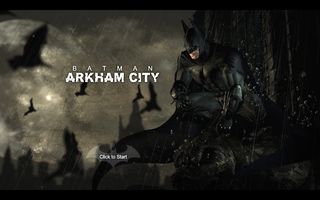
Heat
We should note, also, that the MacBook Pro generates a tremendous amount of heat when trying to play high-end games -- we measured a temperature of 79 degrees Fahrenheit on the touchpad, 100 degrees on the underside and 108 degrees between the G and H keys after 3 consecutive attempts to run the benchmark in "Arkham City" on its highest settings. We consider anything above 95 degrees to be uncomfortable.
Even when playing streaming video on Hulu.com for 15 minutes, the MacBook Pro didn't get much cooler, registering 82 degrees on the touchpad, 95 degrees on the underside and 105 degrees between the G and H keys.
Overall Impressions
Is the MacBook Pro with Retina display, ironically, the best Windows notebook on the market? The answer isn't clear-cut. If you're not in the market for games and don't have a problem looking at small text, the MacBook Pro offers far superior performance to every other mainstream notebook currently on the market. If games are your thing, however, the system's inability to play the latest games for more than 30 seconds may be a deal-breaker. However, performance should improve over time as drivers are updated.
Obviously, the new MacBook Pro has been optimized to run most effectively using Apple's own OS X, but if you love Windows or are just feeling adventurous, you can use Boot Camp to install Windows 7 on your machine. Thankfully, installing Windows on a Mac is a simple process, so if you're the proud owner of a new MacBook Pro, try loading up Windows 7 and giving it a whirl for yourself.
